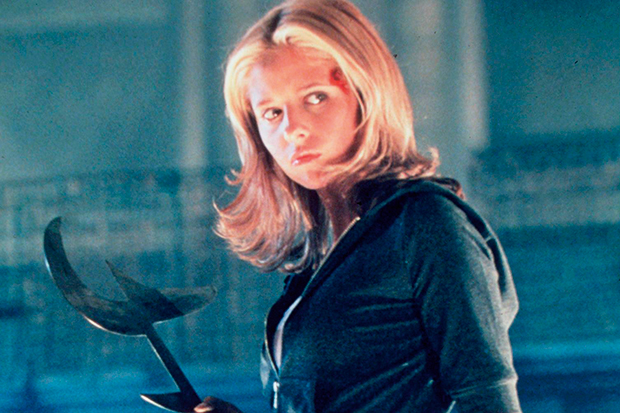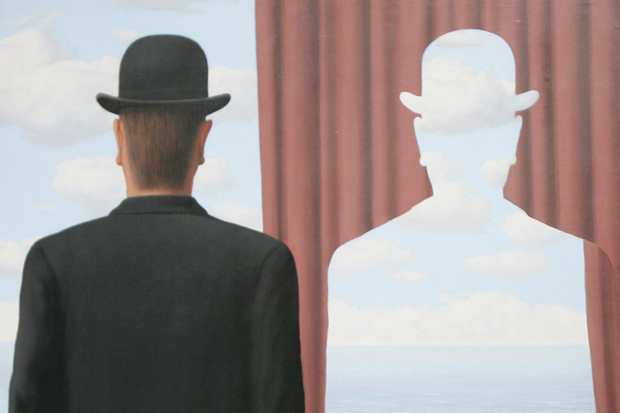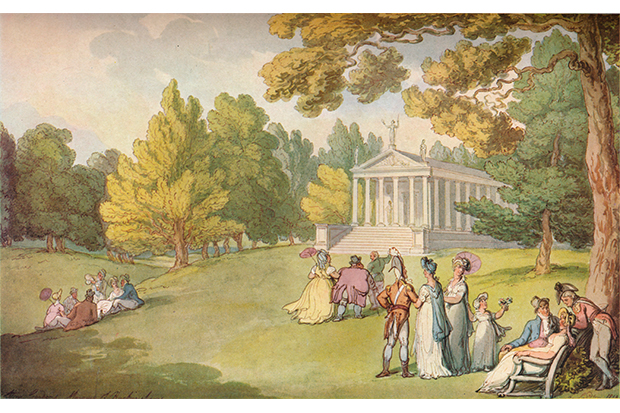Cards on the table. Before I’d published my first novel, or written for newspapers, or won awards for my writing, before all of that, in 2004, I presented a paper at an academic conference about Buffy the Vampire Slayer in Nashville, Tennessee.
I couldn’t really afford to go to that conference. I didn’t have time to be there. I wasn’t an academic; it wouldn’t help my career. It was just that when I heard there was an academic conference about Buffy the Vampire Slayer I knew I had to be there. Not in an ironic way, not as silly fun. I desperately needed to be around people who could talk about Buffy and help me understand why it meant so much to me.
After more than a decade of reading Buffy academia, to which Patricia Pender’s I’m Buffy and You’re History is a very laudable addition, I’m starting to know why this show continues to inspire sincere and thoughtful devotion among intellectual people who need to talk about gender and about what it means to be a woman in our world.
Pender’s book is particularly perceptive on the cultural landscape and the state of feminism in the 1990s, when Buffy began. It’s hard to remember now how bad the ‘post-feminist’ backlash was, but Pender does an excellent job of reminding her readers. Buffy started to air in 1997. The Spice Girls had released ‘Wannabe’ in 1994 and their brand of ‘girl power’ was what passed for feminism in those days. Women were being encouraged to embrace the ‘power’ of learning to pole-dance or wearing ‘stripper heels’. On television there was Ally McBeal, about an ostensibly high-powered lawyer whose main interest was finding a boyfriend, and Sex and the City, about four ostensibly high-powered women whose main interests were boyfriends and shoes.
And then there was Buffy, whose main interest was fighting the forces of darkness. She sometimes longed to be a normal girl and just worry about boyfriends and shoes but she knew she had a bigger purpose — that her life was part of a project handed down to her by other women and which she would hand on herself. It wasn’t just a feminist show. In an arid time, when women would routinely say ‘I think feminism’s battles are over’, it was a show about feminism.
I’m Buffy and You’re History is also very smart on the ways that Buffy stepped lightly between genres. Was it horror or comedy? Romantic drama or action thriller or musical? It defied categorisation; even its title — offputtingly silly to some, a siren call to others — was a precursor of today’s mashup culture in which we’re constantly remixing and remaking. The book is also clever and thought-provoking on the question of why feminism can sometimes seem so humourless, on how enjoyment of any artistic product of the patriarchy can be seen as ‘giving up on ideological purity’, and how Buffy works as a mainstream show (a pretty girl in the lead, a lot of fighting) but is also subversive and counter-cultural.
I’m Buffy and You’re History, as its author acknowledges, is intended to be included as chapter excerpts in university courses in media, television and gender studies. The book is written in the dry language of academia. Sentences like ‘I want to consider how the rhetorical mode of metalepsis informs the logic of this video mash-up’ might put some people off — though not me, I love a bit of academic discourse. I suppose I should admit at this point that a paper I co-wrote is referenced in I’m Buffy and You’re History. At this juncture, that might not surprise you.
The book will not convert you if you’re not a Buffy fan. Don’t read it if you don’t love the show already; you’re beyond my help. But if you know that this show has had a powerful hold on you and you want to understand some of the reasons why, pick up a copy along with the wonderful essay book Fighting the Forces and browse through the online journal Slayage. And when the apocalypse comes, you know who to beep.
The post Thoroughly modern Buffy appeared first on The Spectator.
Got something to add? Join the discussion and comment below.
Get 10 issues for just $10
Subscribe to The Spectator Australia today for the next 10 magazine issues, plus full online access, for just $10.
You might disagree with half of it, but you’ll enjoy reading all of it. Try your first month for free, then just $2 a week for the remainder of your first year.














Comments
Don't miss out
Join the conversation with other Spectator Australia readers. Subscribe to leave a comment.
SUBSCRIBEAlready a subscriber? Log in